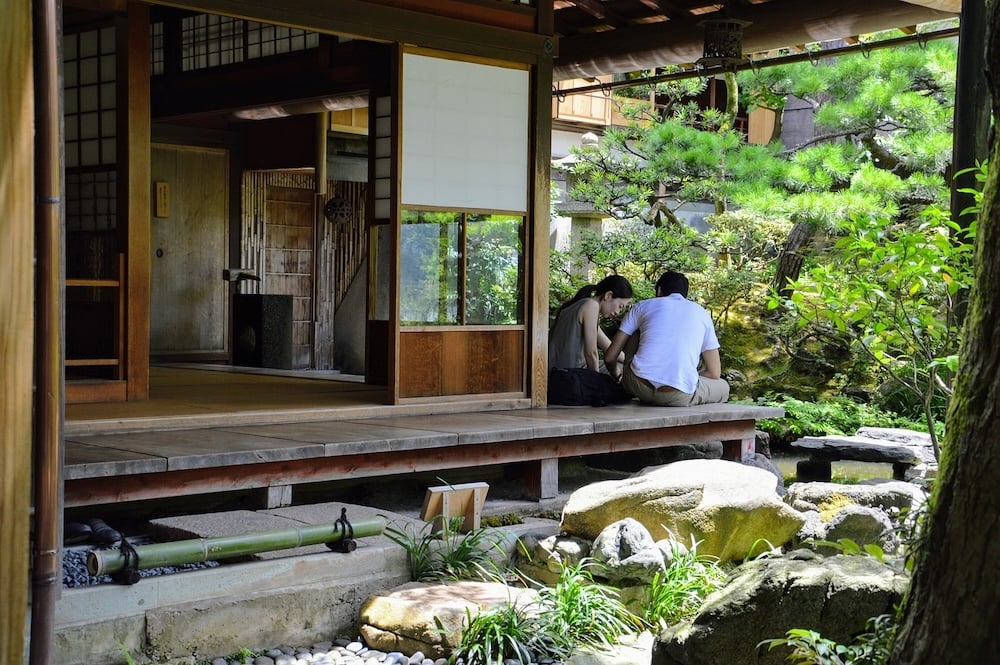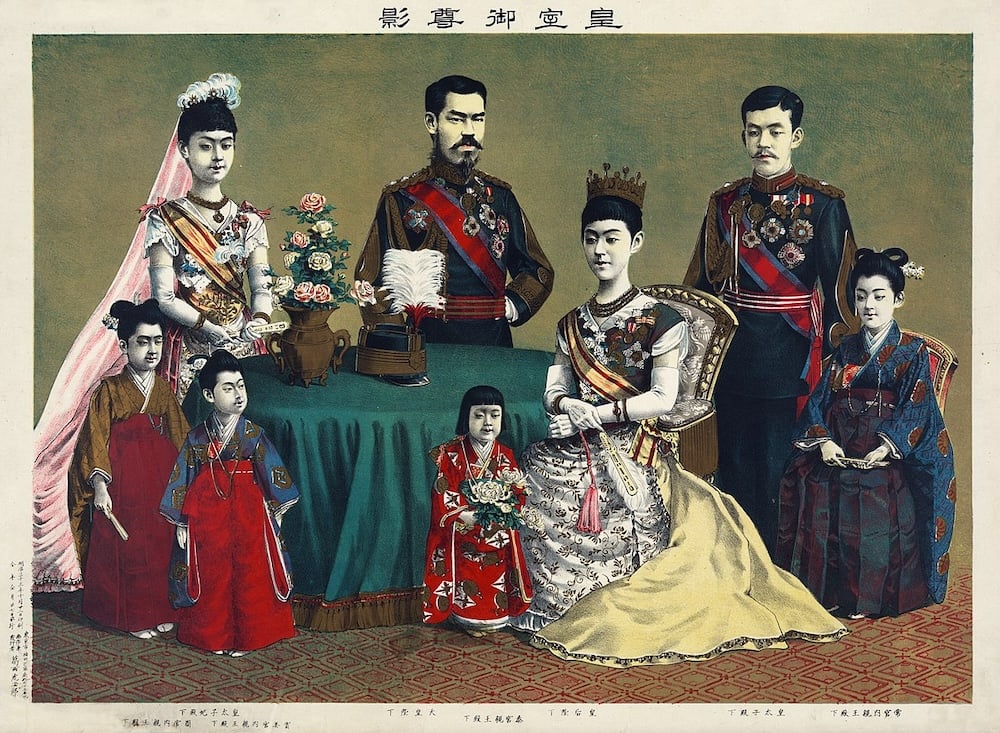
Upon my arrival in Japan, I initially resided in a dormitory with a living space shared by both foreign and Japanese students. This environment introduced me to several new experiences, such as removing shoes indoors and participating in communal cleaning and trash-sorting days. Adapting to these communal norms was necessary, yet I found it relatively easy to revert to my familiar American habits within the confines of my private room.
However, when I began cohabitating in a one-room apartment with my boyfriend, the experience was much different.
There’s a growing interest among many foreigners to come work and live in Japan. However, life in Japan comes with life with Japanese people, and a particularly appealing experience is the opportunity to stay with a host family. Sharing a household with a Japanese person and interacting with his family exposed me to numerous differences and similarities between American and Japanese domestic life.

How have Japanese households changed over time?
Looking back at history, Japanese family structures were shaped by Confucian principles, emphasizing strong family ties and responsibilities. The traditional ‘ie’ system, a patriarchal, multi-generational household, has been central to this. The head of the household, typically the eldest male, held significant authority, often living close to his extended family, except in some cases when the male entered the wife’s family for political reasons.
The late 19th century saw the Meiji government adopt the Meiji Civil Code, influenced by the French Civil Code. This law supported the patriarchal system, giving the male head of the household considerable control. Around this time, families began shifting from extended to nuclear structures, particularly in cities. This was largely due to industrialization and urbanization, as people moved for work and lived in smaller spaces.
The Meiji reforms modernized Japan but did little to improve women’s rights within the family. Women largely remained under male authority, with their roles centered on being wives and mothers, and with few legal rights.
However, these traditional family structures have changed over time. Japan’s aging population and lower birth rates have led to different household structures. Today, many families have two generations, with both parents often working. This has altered caregiving, with more elderly care within families, a trend known as ‘rōrōkaigo’ (老老介護).

The Meiji Emperor and the imperial family, by Torajirō Kasai, 1900
Post-war Japan saw more women working, especially during the economic boom of the 1950s and 60s. While this changed gender roles somewhat, women still handled most domestic tasks. Legal reforms have since improved gender equality, changing women’s roles and status in families.
Marriage patterns also shifted, moving from arranged to love-based marriages. Young people now have more choice in selecting partners, reflecting broader societal changes and Western influences.
Today, Japan faces a significant birth rate decline and an aging population. Reasons include economic pressures, changing attitudes towards marriage and childbearing, women’s increased education and workforce participation, and shifting life priorities.
There’s also a rise in single-person households among young and elderly people. Traditionally, the eldest son’s family was expected to care for aging parents. However, in the modern day, this has changed, with more elderly living independently and a growing reliance on social services and elderly care facilities.
Japan is also slowly recognizing diverse family models, such as single-parent families, childless couples, and LGBTQ+ families. However, atypical family models still face social challenges and limited legal recognition, like the absence of legal marriage for LGBTQ+ couples.
Another major change in the modern day compared to the past is the rise in international marriages, leading to more culturally and ethnically diverse families NPO Osaka International Marriage Support Center. This trend contributes to the changing face of the family in Japan, bringing different cultural values and practices into the family structure.

What is it like in modern-day Japan?
There are many different norms between Japanese and American households, such as little things that may be surface level different, like having bathroom slippers separate from normal house slippers or the seeming need to have rice with every meal regardless of what is cooked. However, admittedly, I’ve noticed a lot more similarities than differences.
When I first met my boyfriend’s family, it was during a family barbecue. The scene was quite typical, with grandma carrying sweets in her bag and children climbing trees and kicking a soccer ball around. I was pleasantly surprised to find his family very welcoming and open, intrigued by the foreign girl he had brought home.
The resemblance in family dynamics between my boyfriend’s family and my own, which surprised me. Things like the eccentric older brother being vocal with his strong opinions contrasted with how everyone remarked on the cuteness of the little brother. Or how the in-laws made a noticeable effort to stay in their mother-in-law’s good graces. Even the small details, like the older cousins playfully coaxing the younger boys to do pushups to showcase their strength, mirrored familiar interactions with my own. Of course, every family has unique quirks, but in the end, many of the cultural differences seemed surface-level.
However, as the day progressed, we noticed that the stairs at the uncle’s house were worn, making it difficult for the 89-year-old grandma to navigate from the firepit to the house. Promptly, the family sprang into action. They began digging in the dirt to clear the old blocks, moved new blocks into place, leveled each step, and crafted a sturdy handle from wood scraps.
Feeling compelled to contribute, I joined in the effort. In my family, everyone chips in when there’s work to be done. Before I knew it, I was beside my boyfriend’s dad, digging into the mud to remove debris and carrying cinderblocks from the nearby workshop.
Upon completing the task, I overheard a comment, “Oh, he better be careful; she’s definitely a strong girl.” The following day, my boyfriend relayed his father’s words after working together: “My dad said he was surprised to see a girl willing to help out with physical labor. It must be a foreigner’s style, but he said he really likes that style.” This was my first experience with the expectations of gender roles in Japanese families.

In Japan, as in many other countries, traditional roles often cast women as homemakers and men as the primary earners. This is not unique to Japan, but it’s still prevalent.
For instance, I recall a Japanese friend serving dinner to my family. He gave larger portions to the men and smaller ones to the women, which upset my mother. Although many Japanese people tend to be considerate of their guests’ preferences when serving food, it’s still common for women to be expected to eat less. This cultural norm is even reflected in restaurants, where menus often feature “Women Sets” with smaller portions.
Yet, even with progress in women’s rights and more women participating in the workforce, traditional gender roles continue to be a norm in many Japanese homes. Because of this, many young Japanese are reluctant to marry or start families. Poor job opportunities, corporate environments that don’t support both parents working (particularly challenging for women), and limited societal acceptance for young children all have heavily impacted the modern-day view of families, especially among the younger generations of Japanese people.















